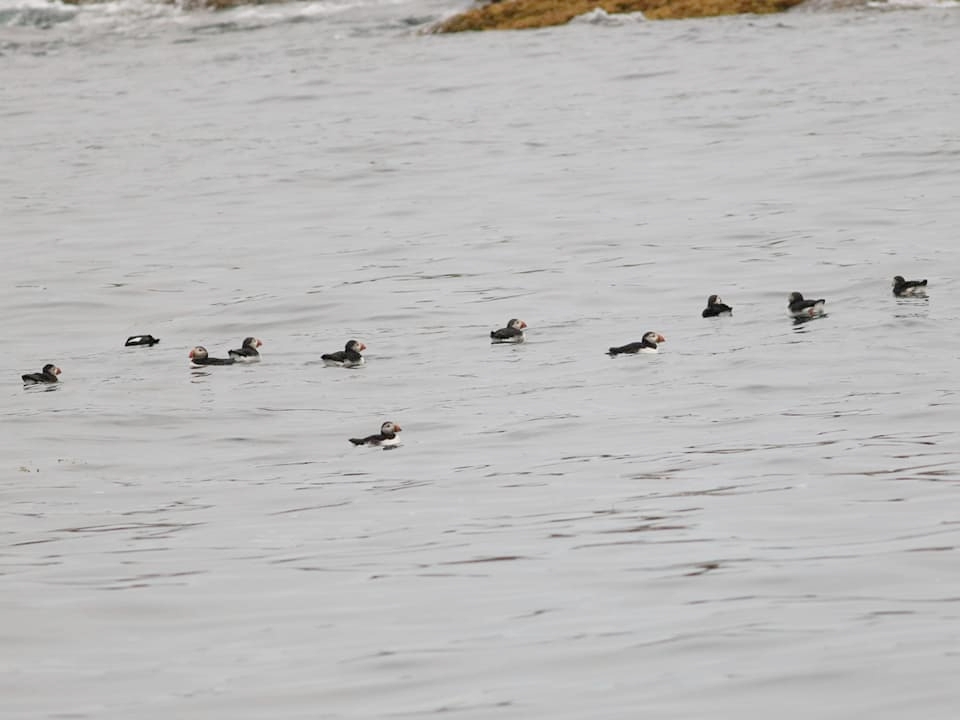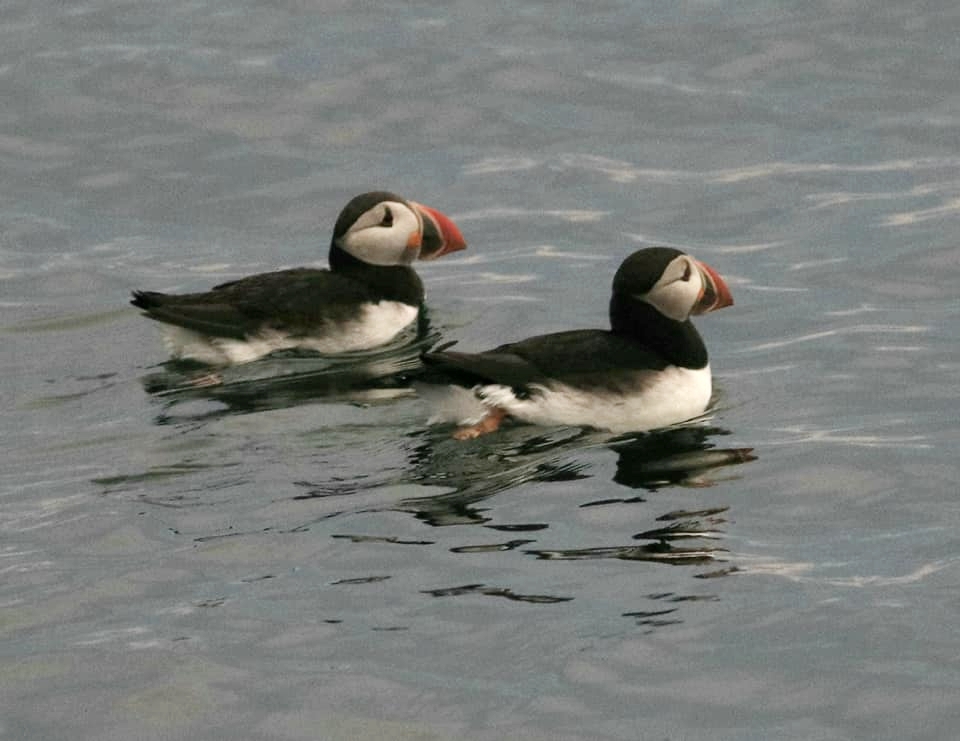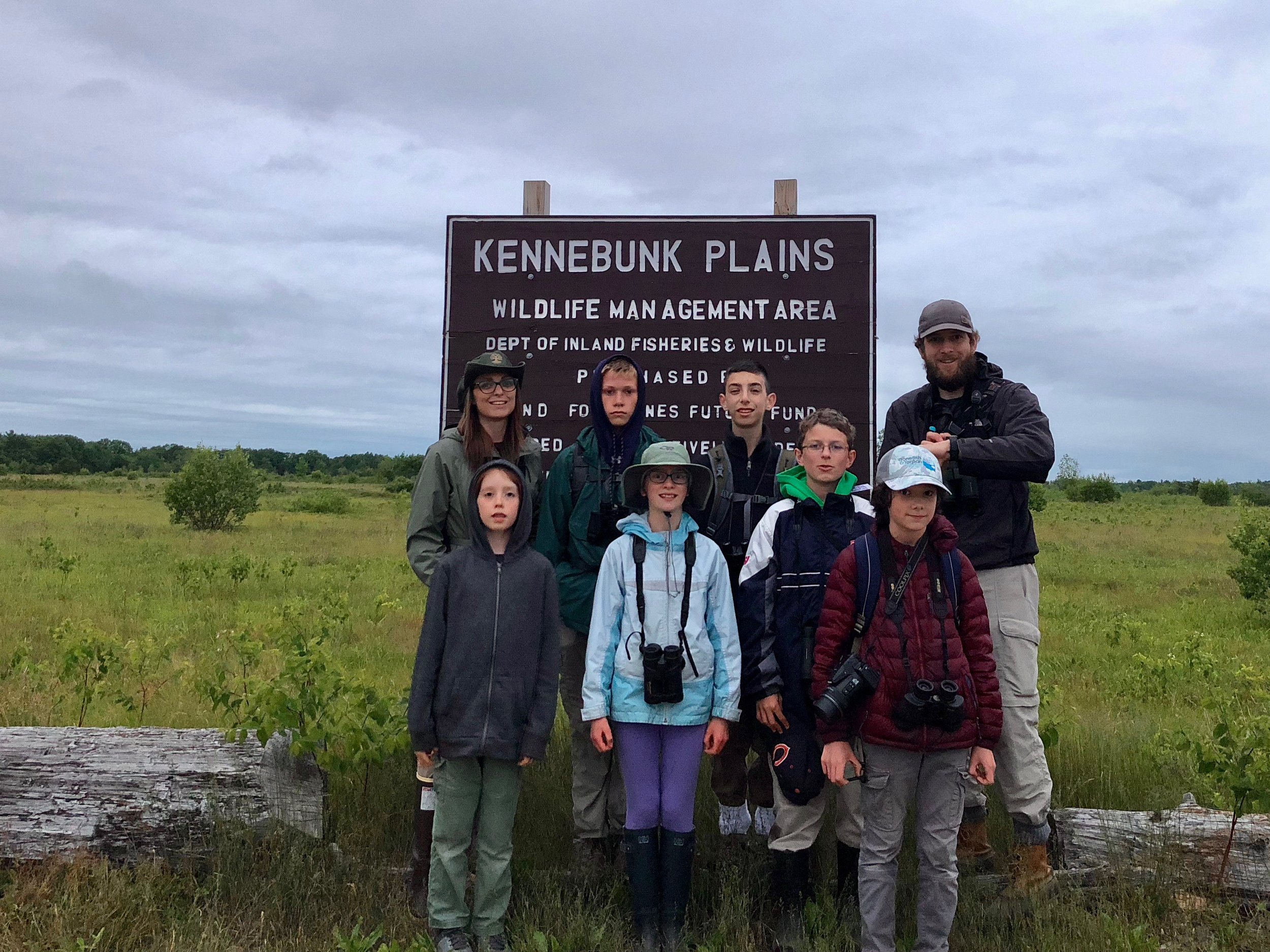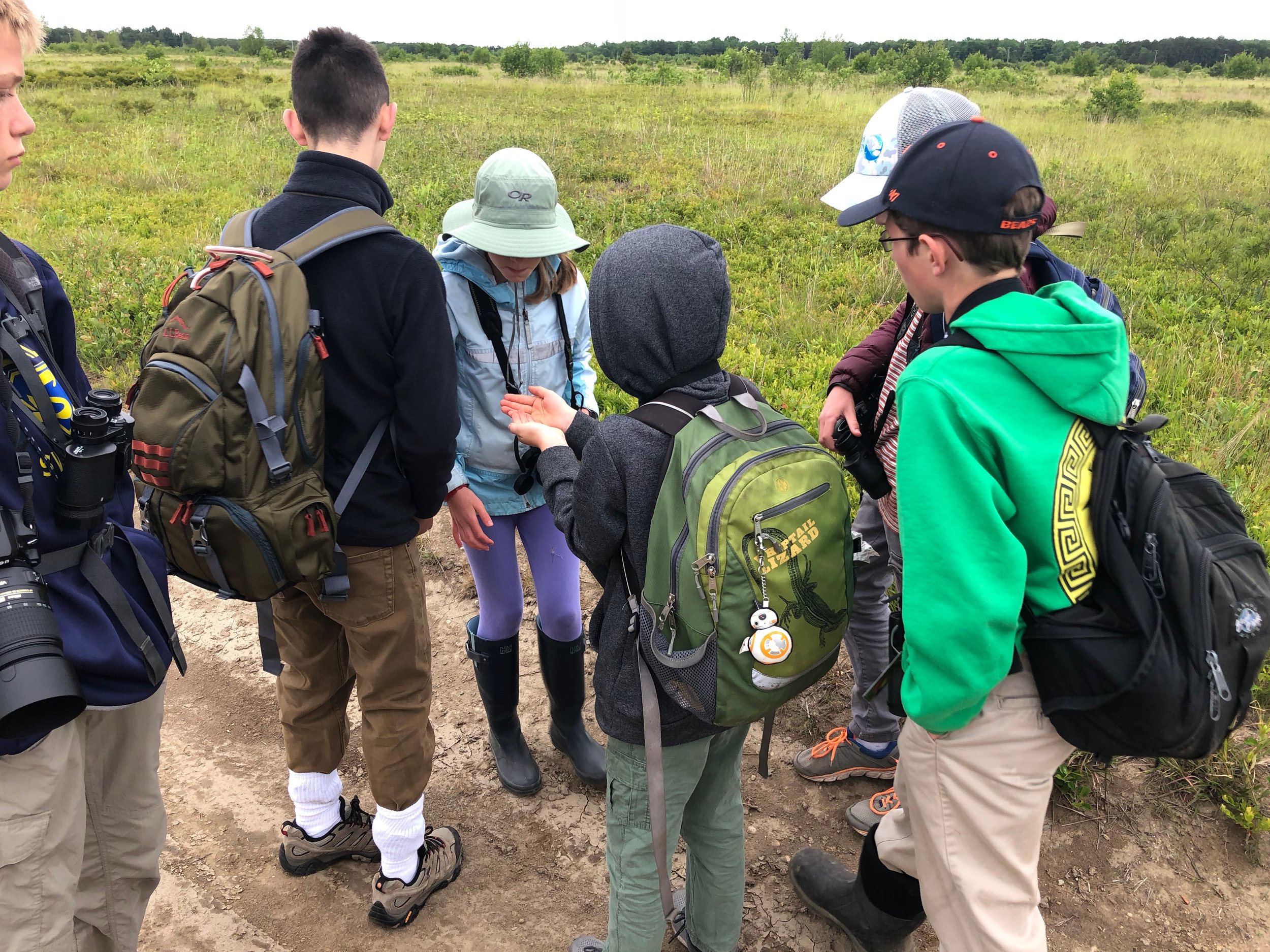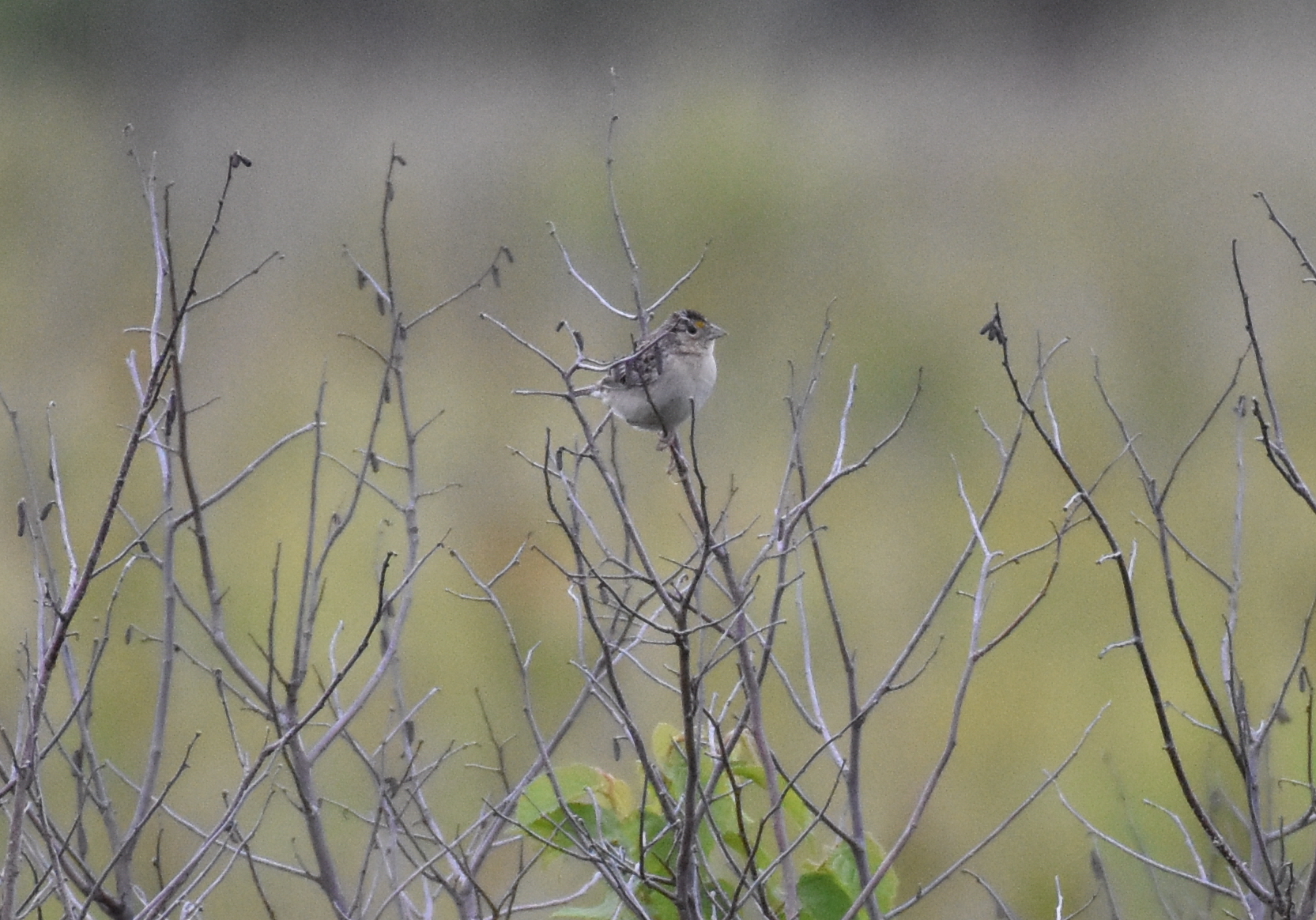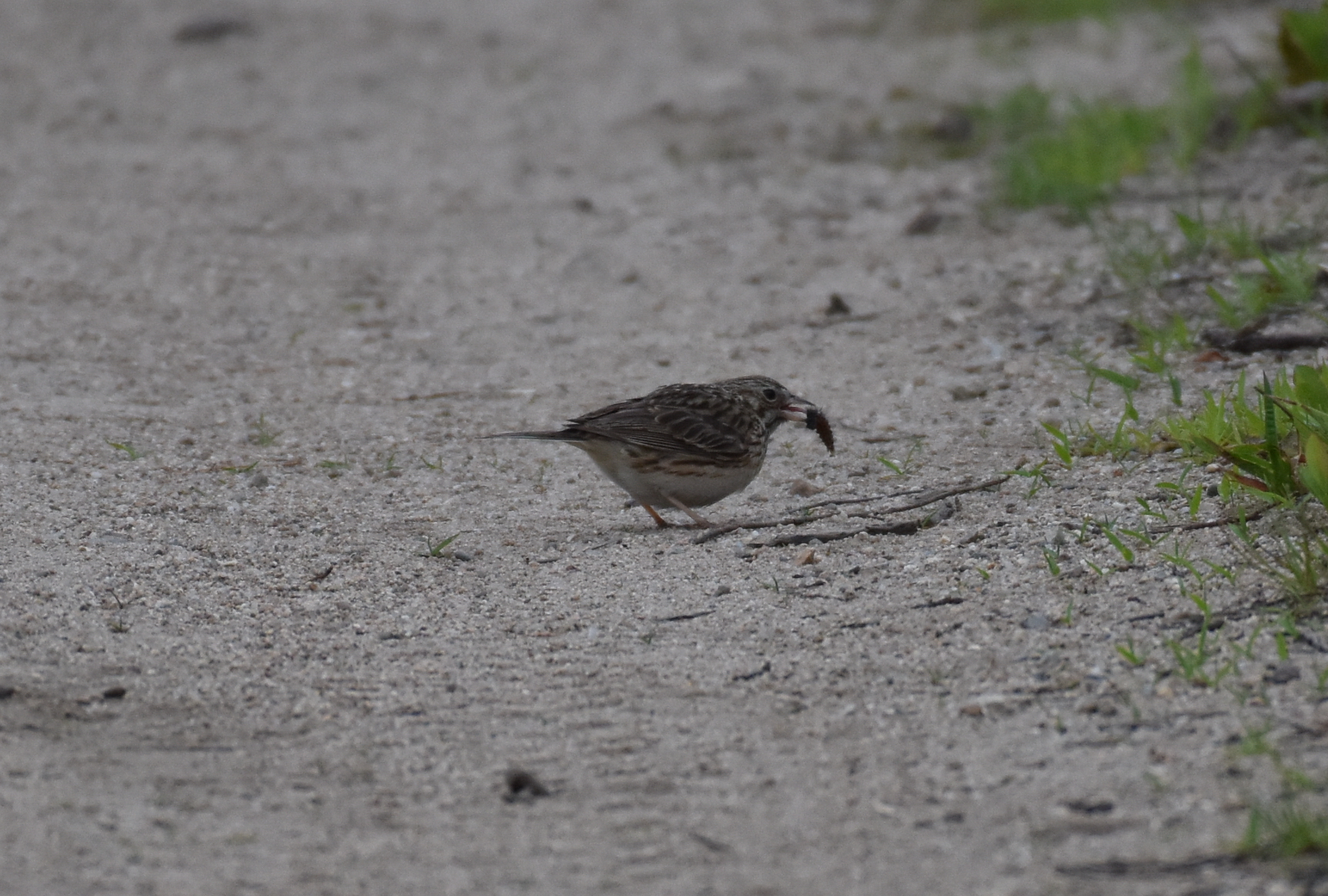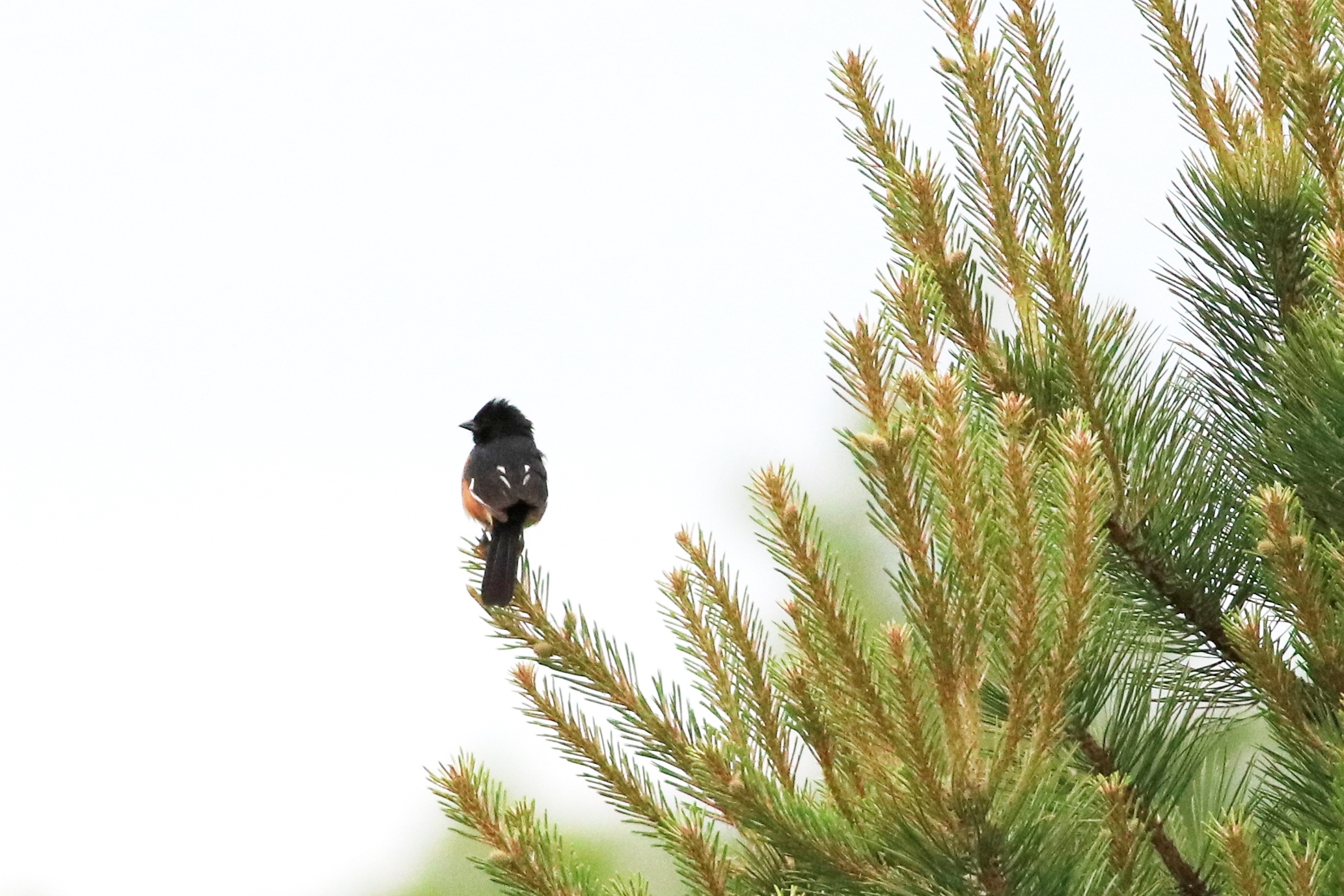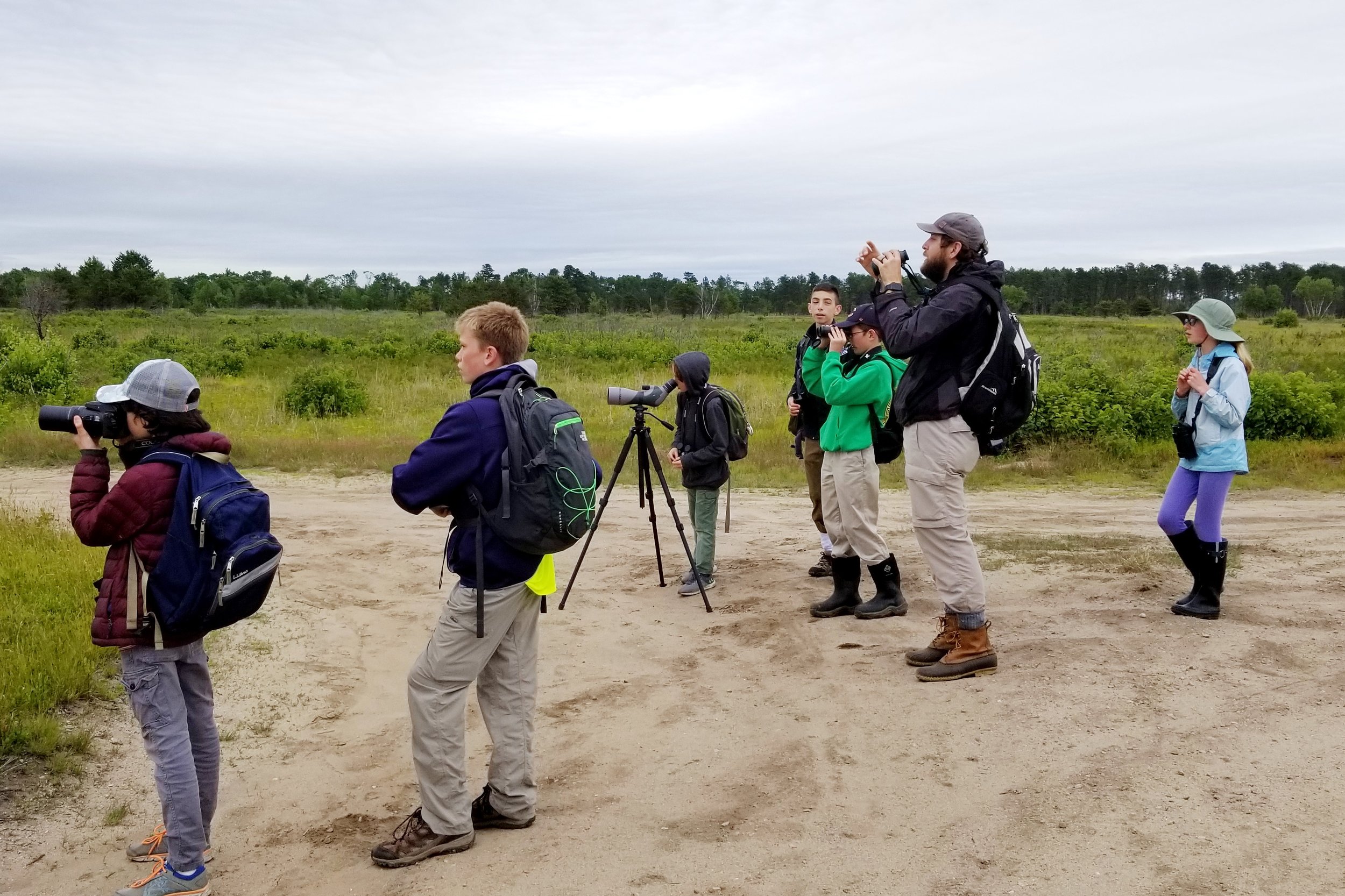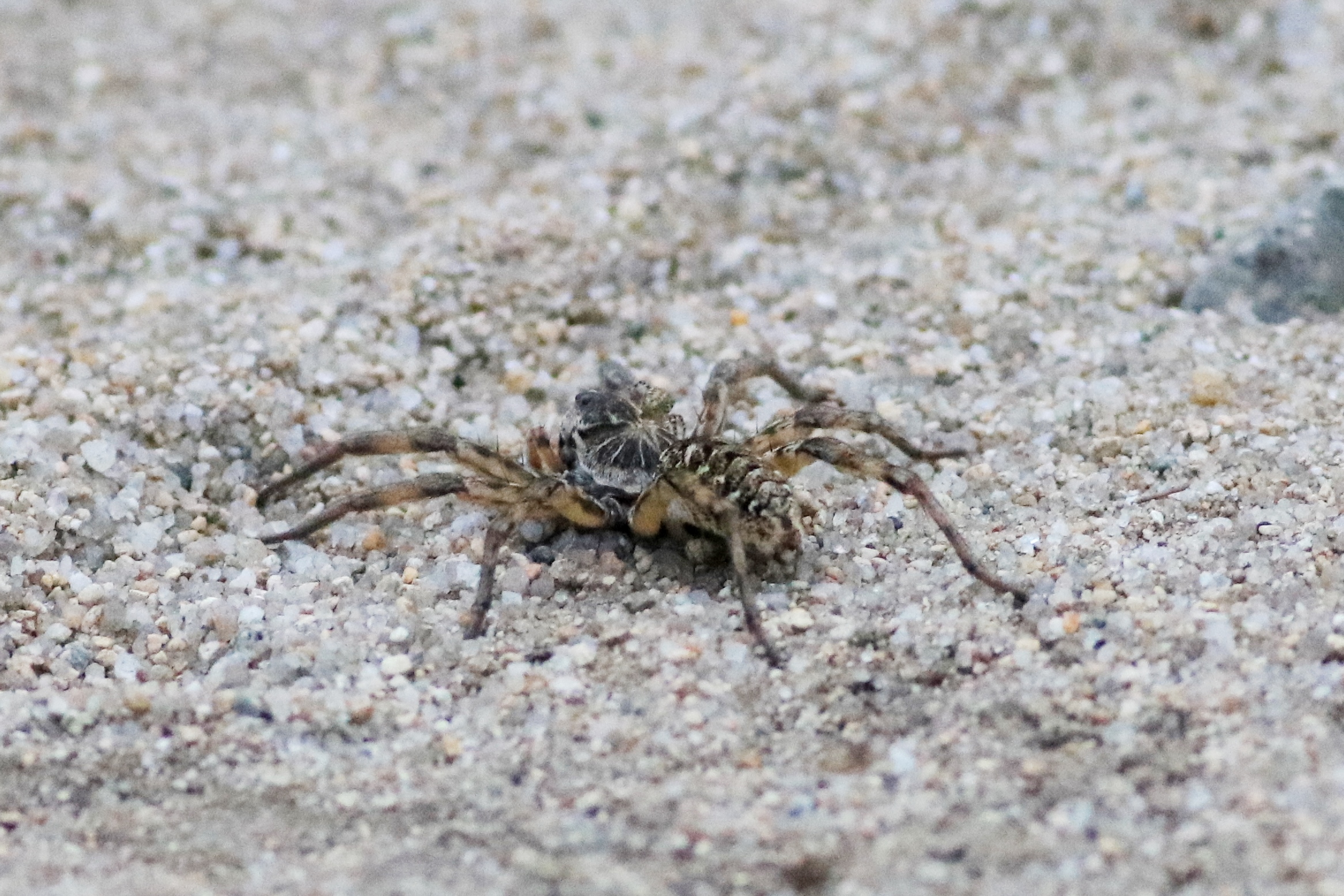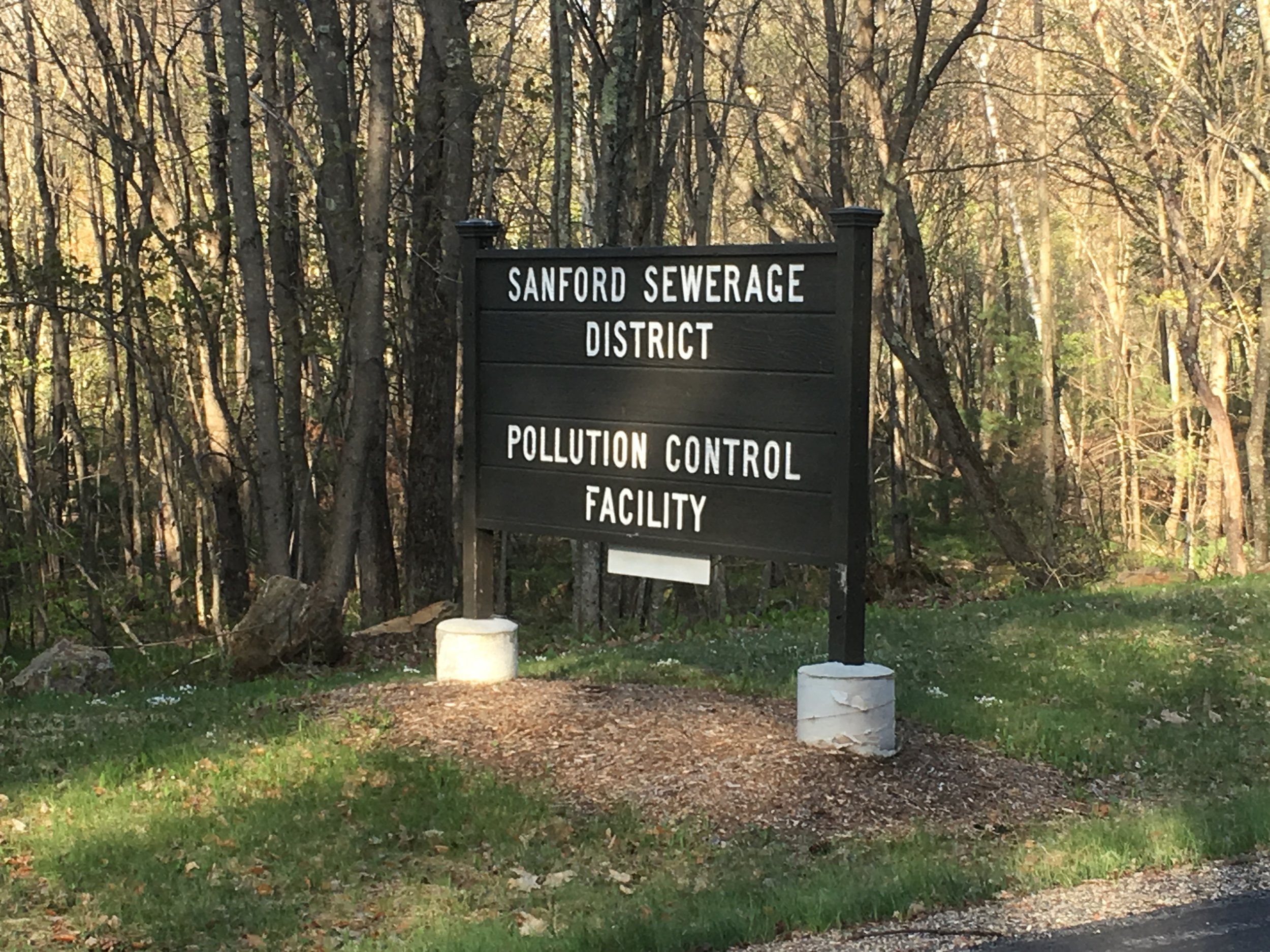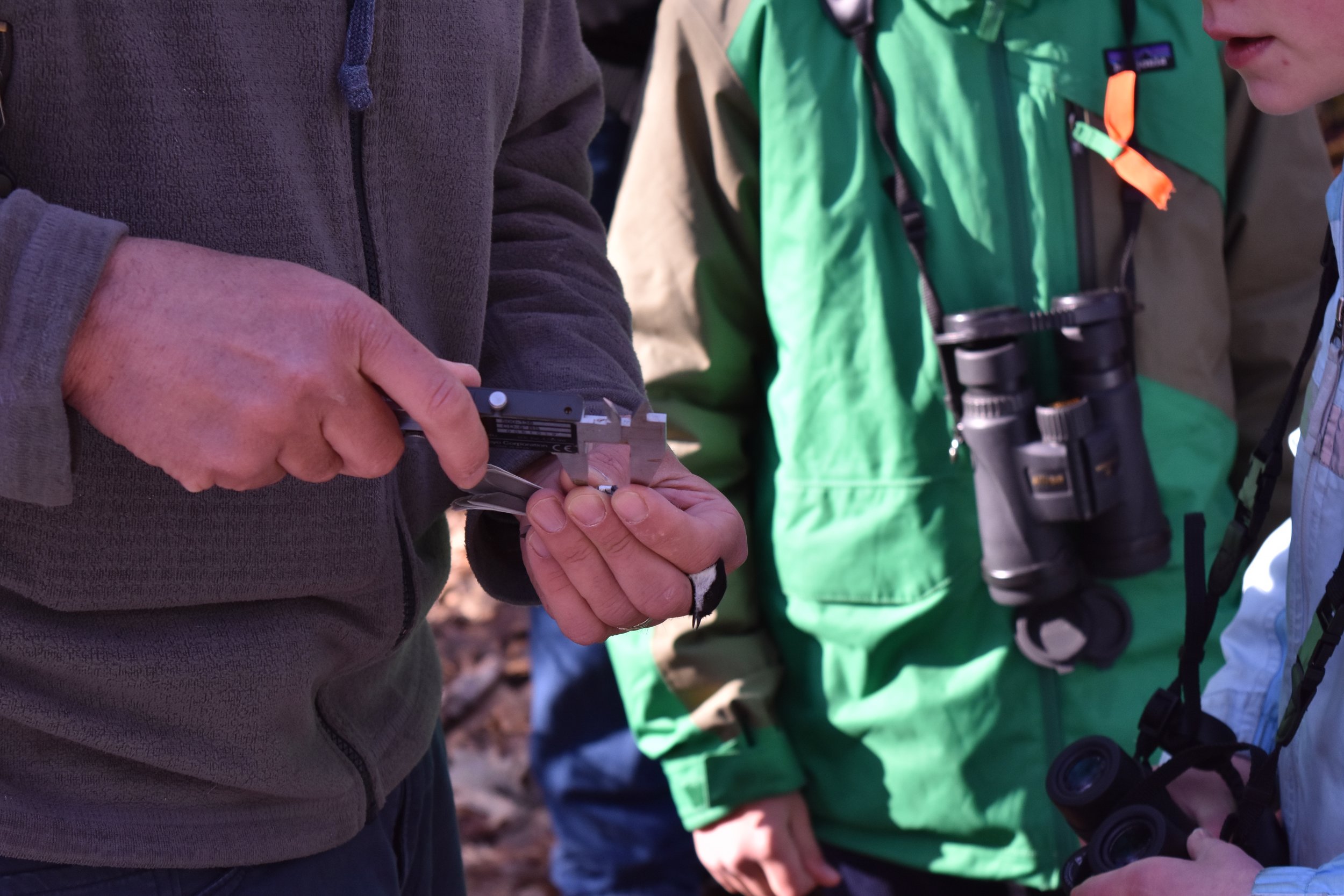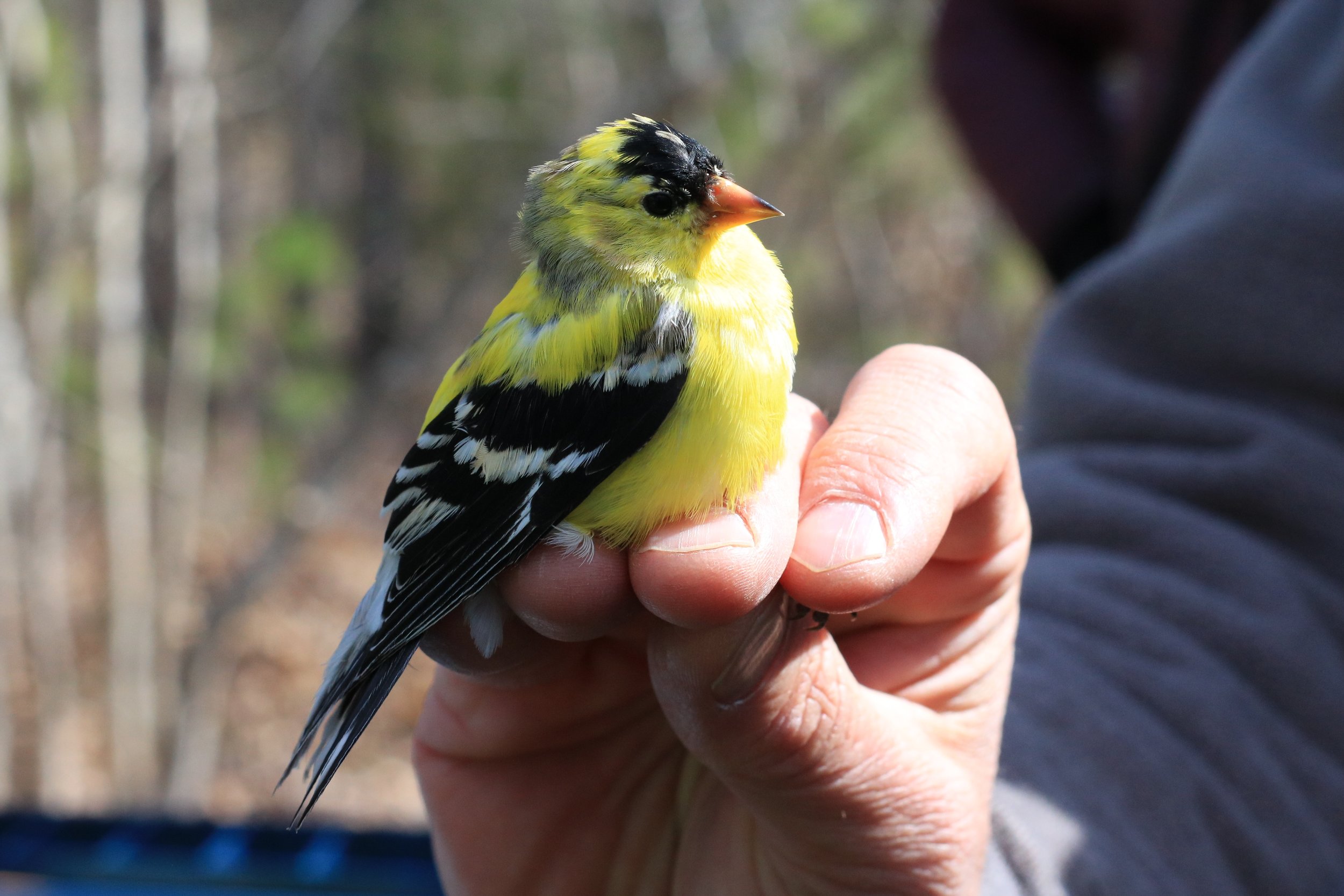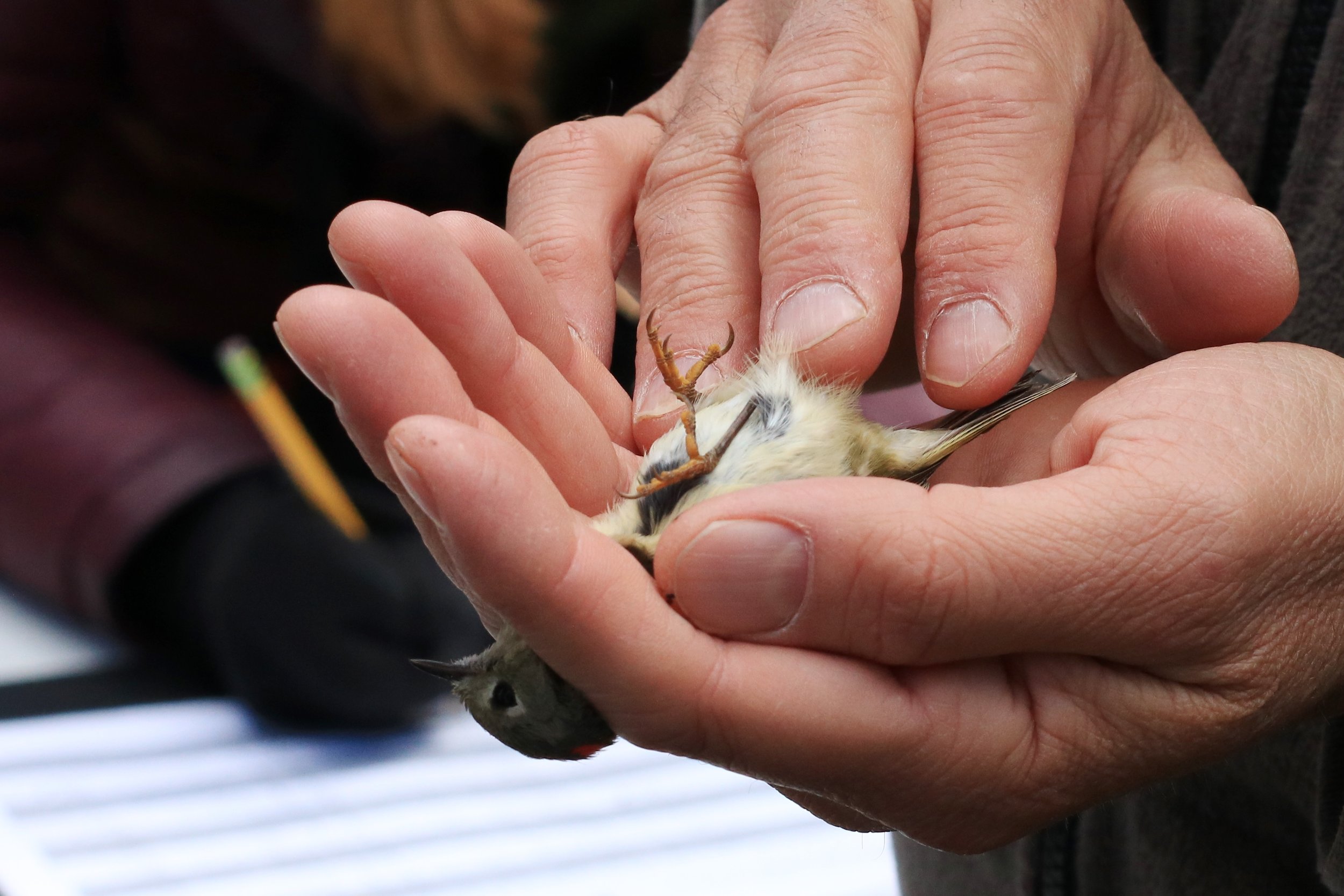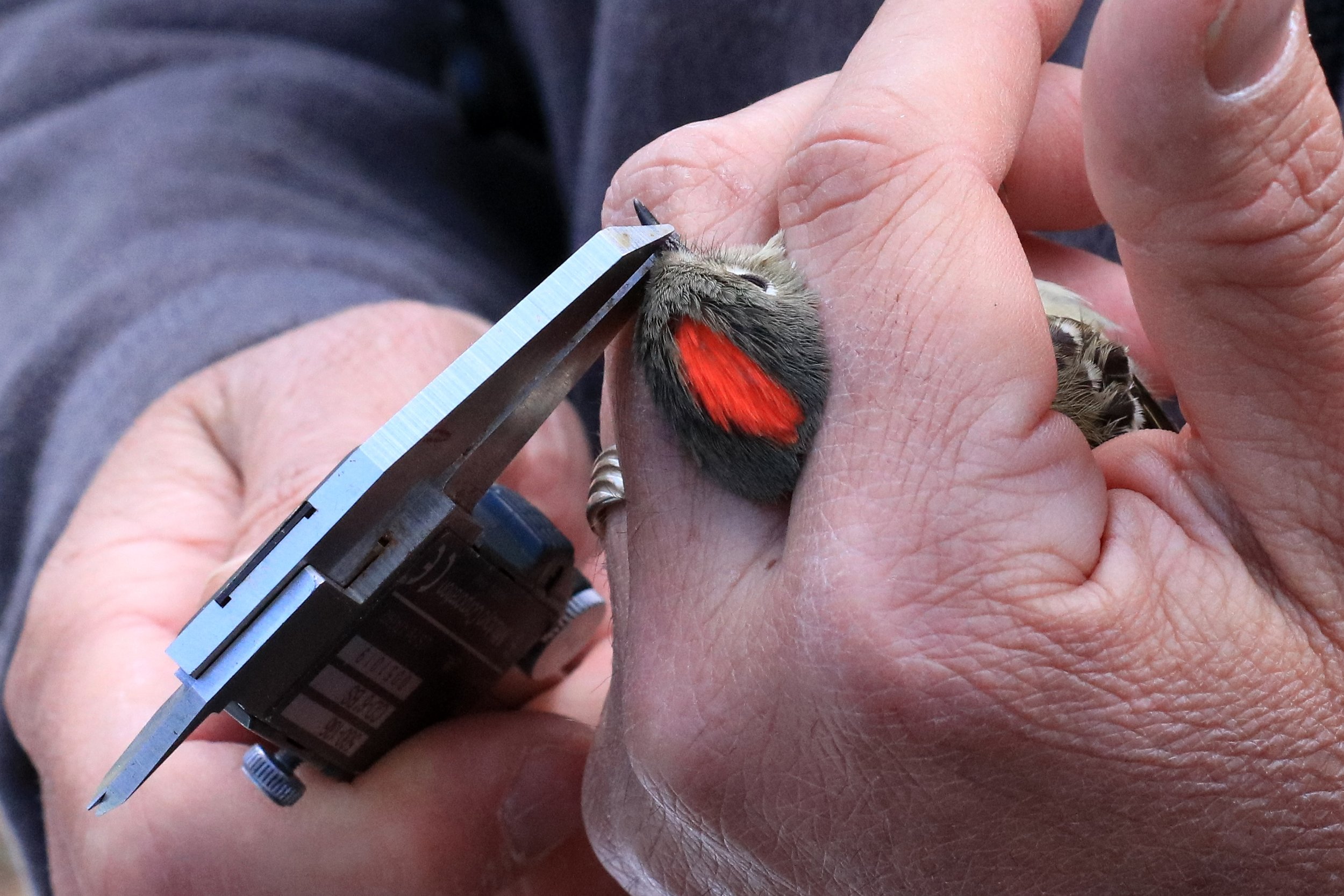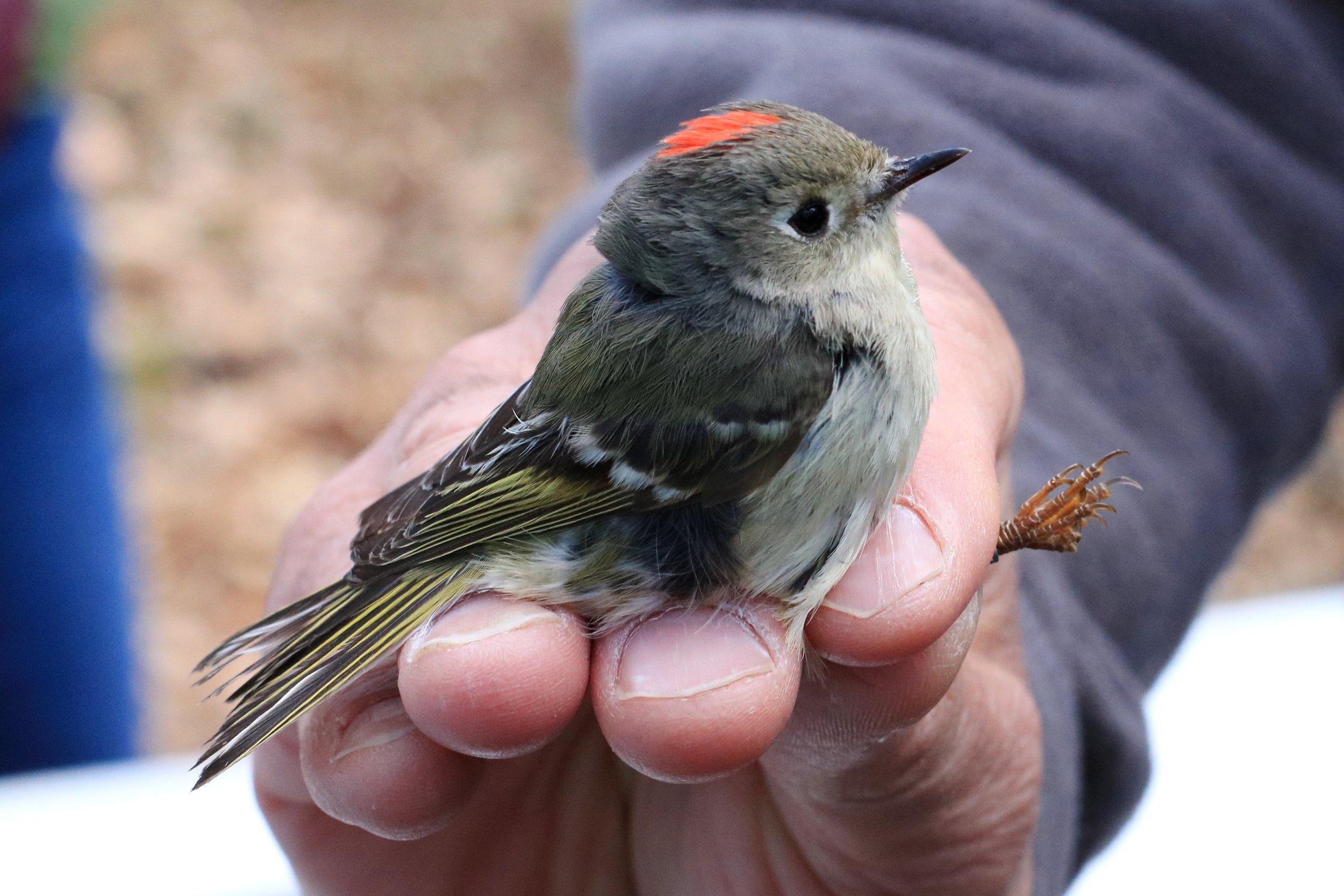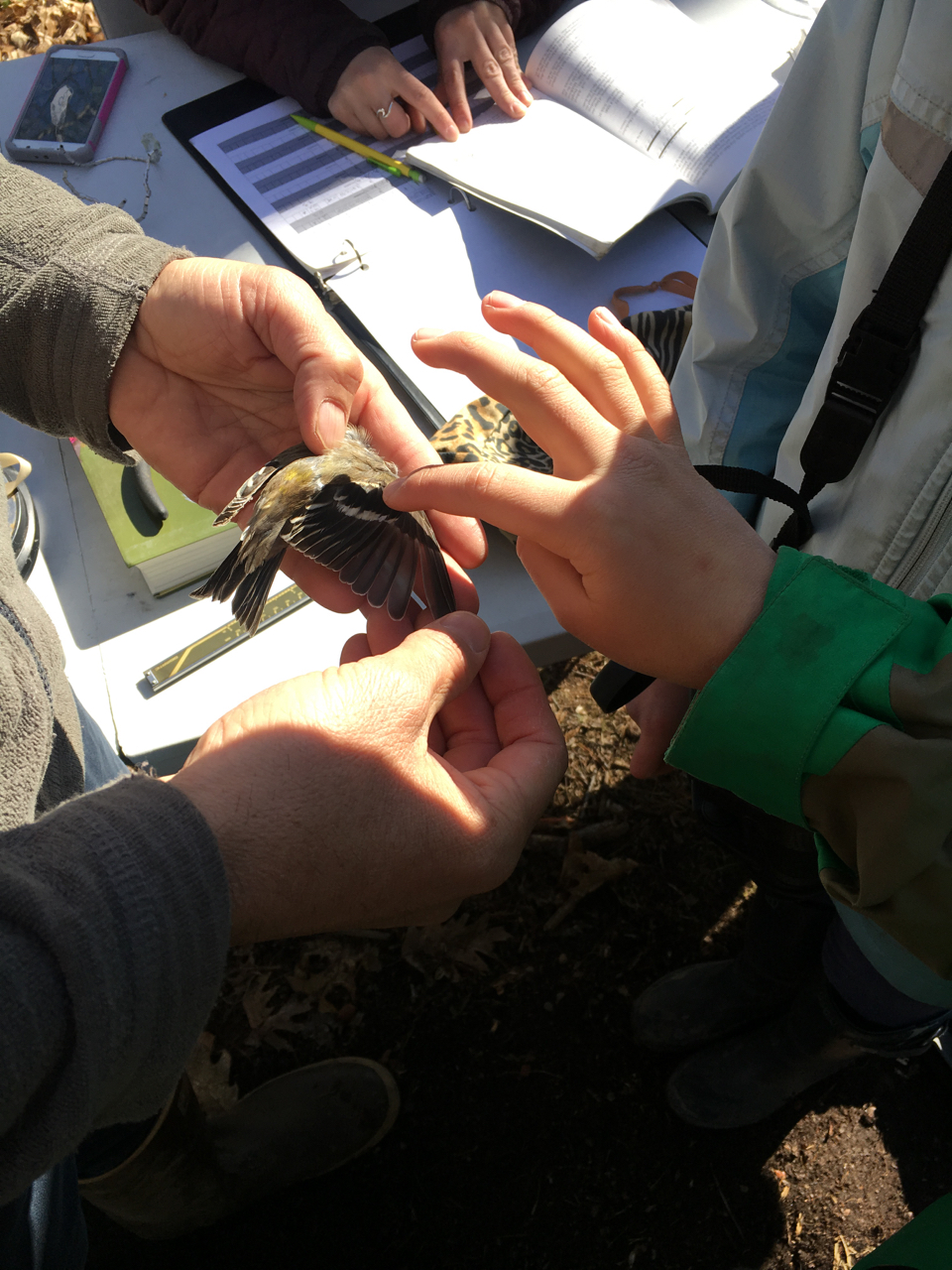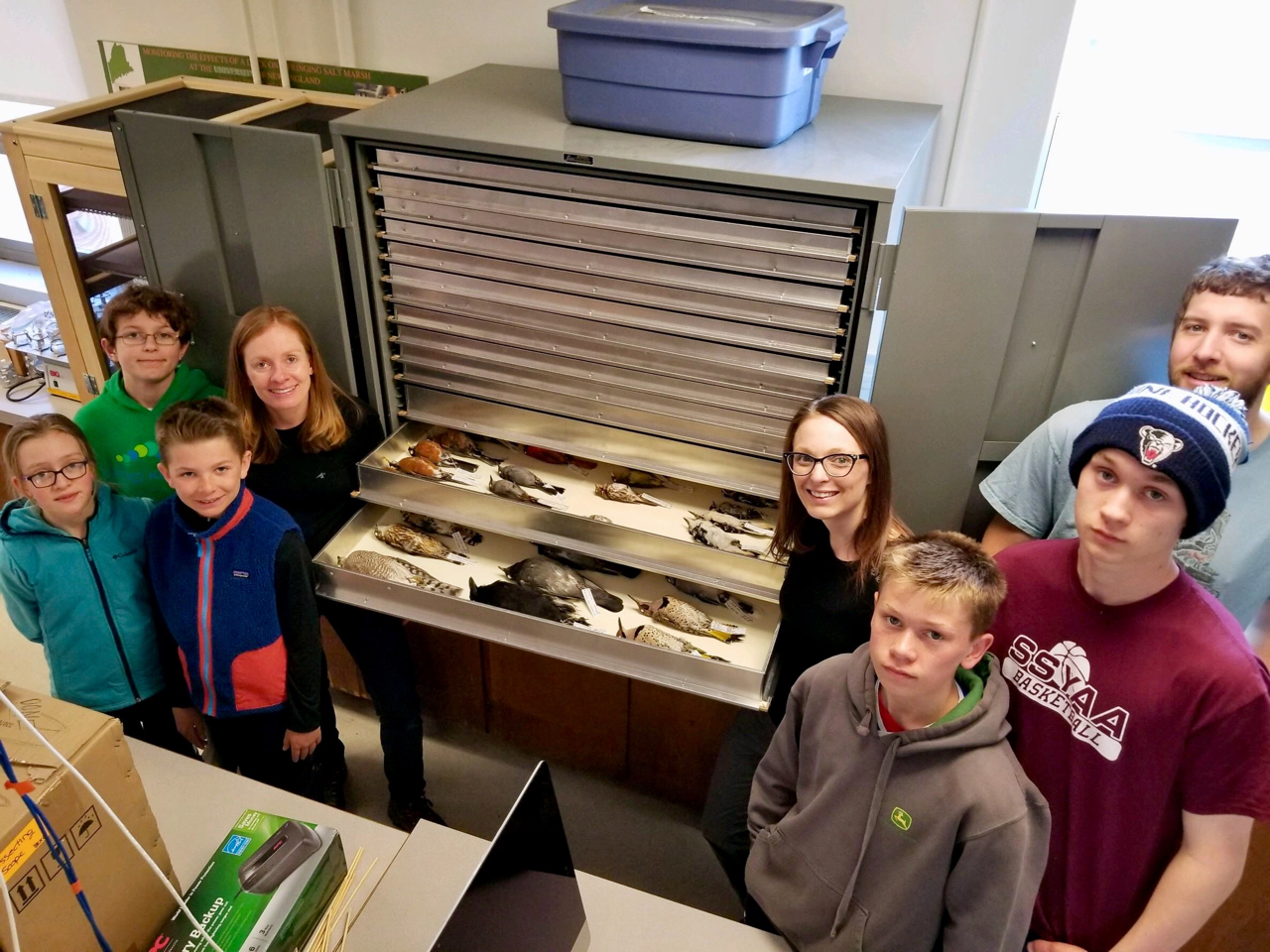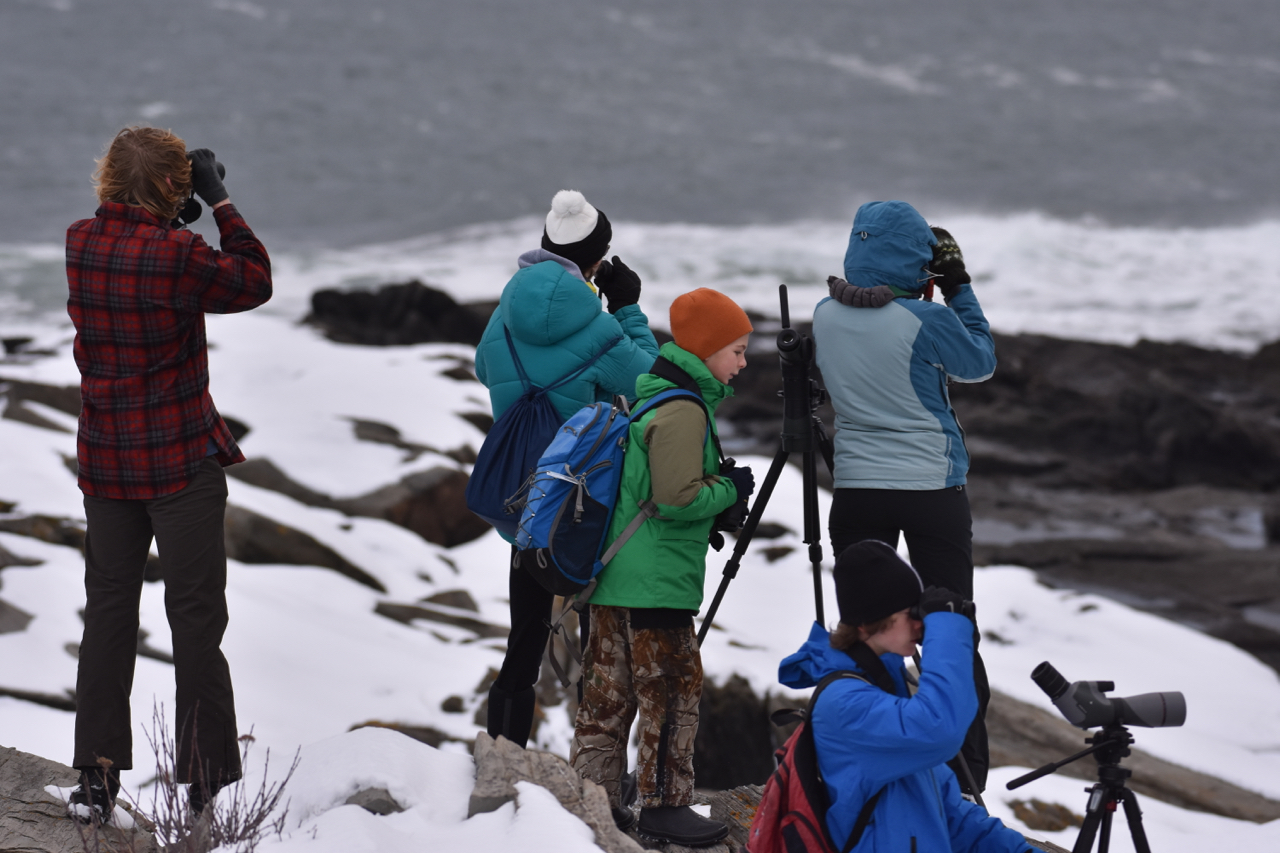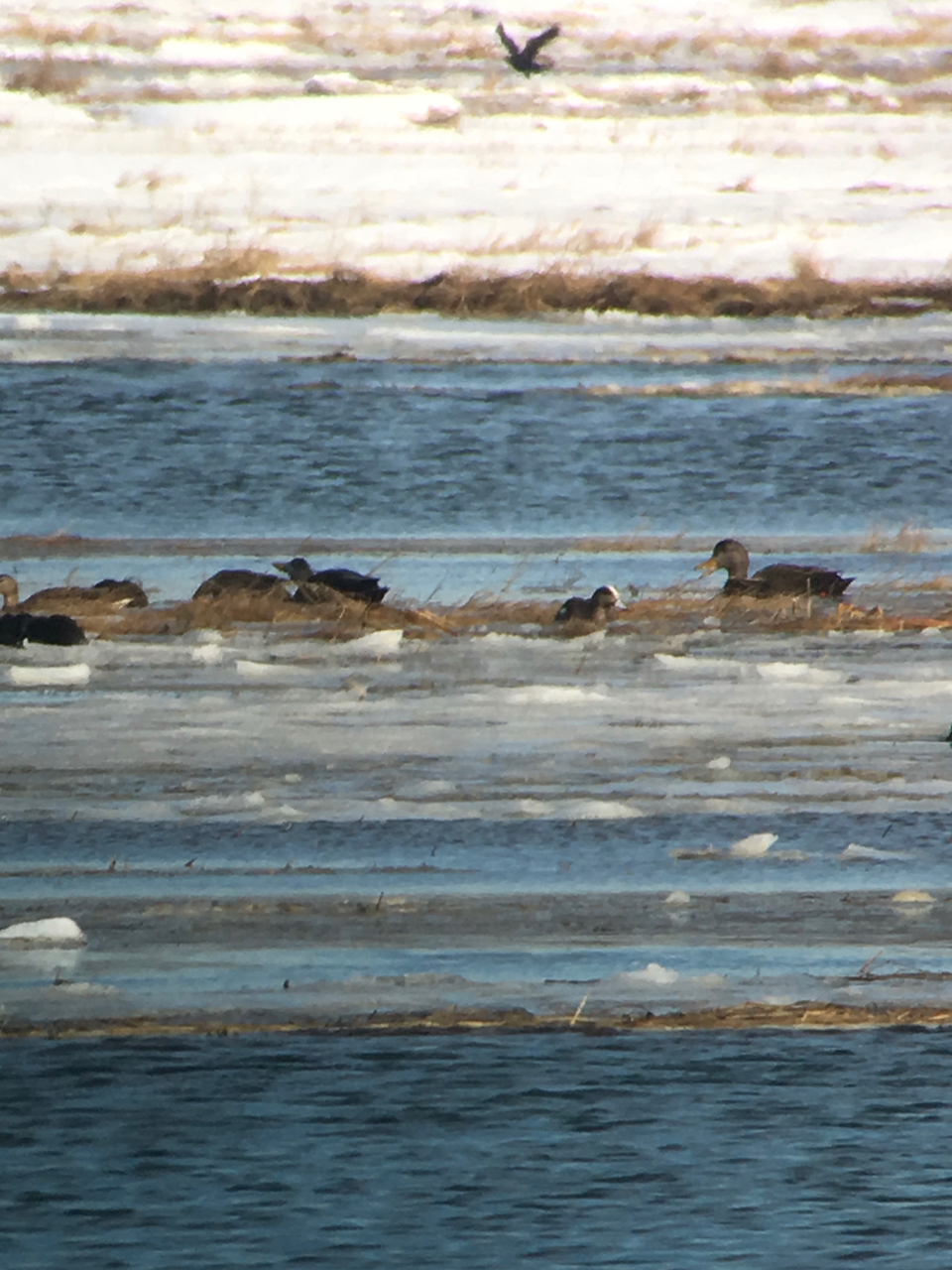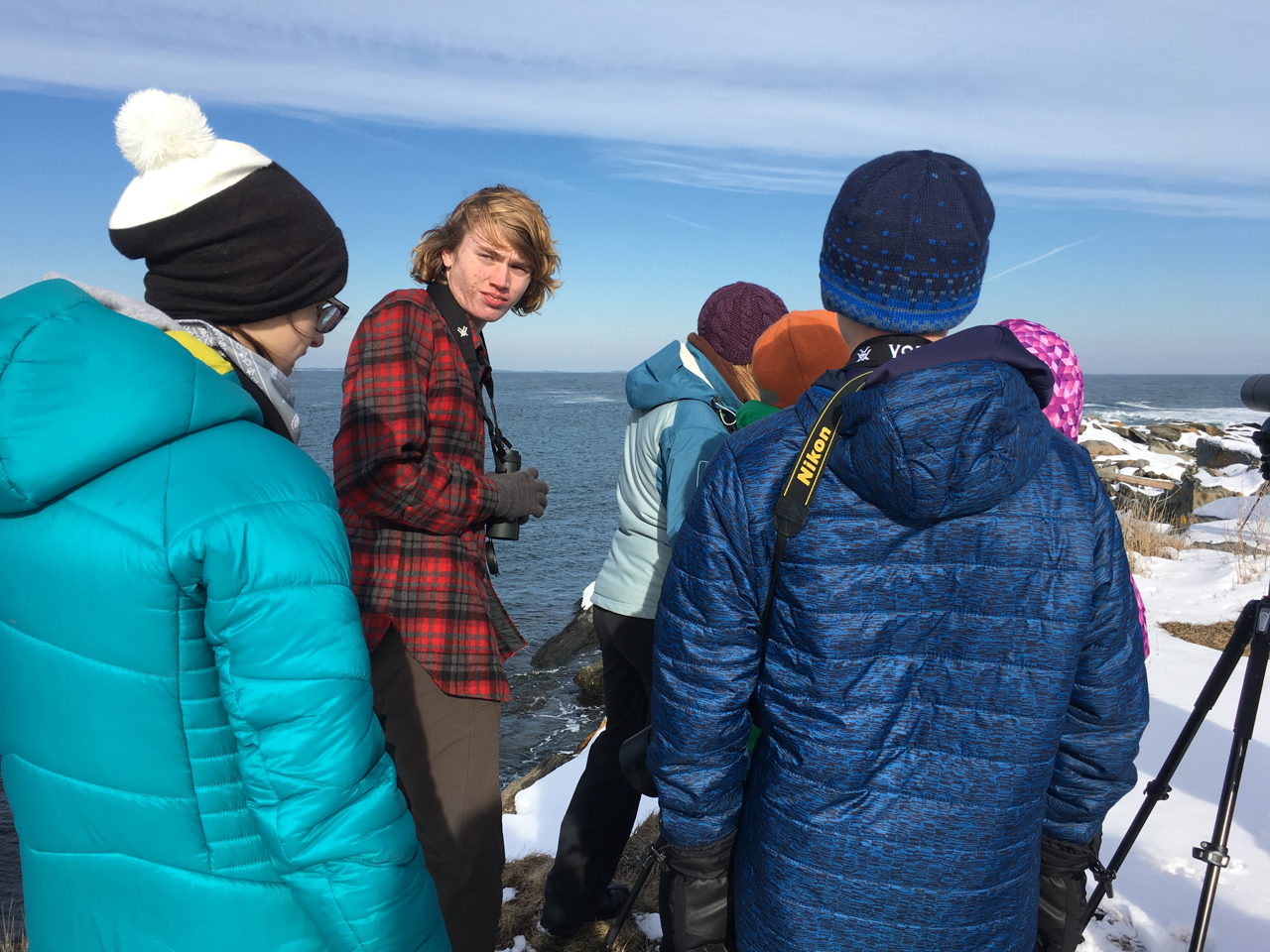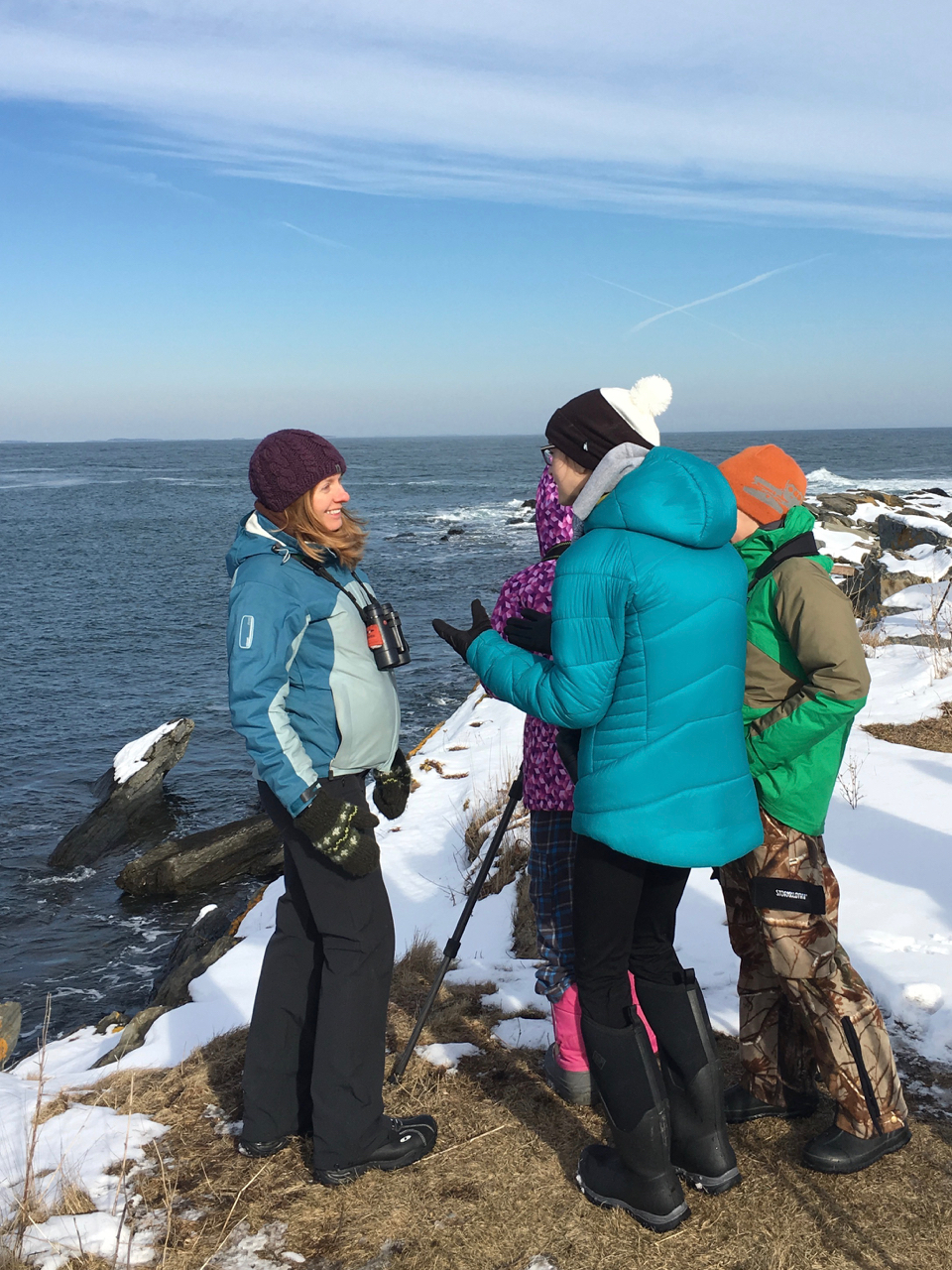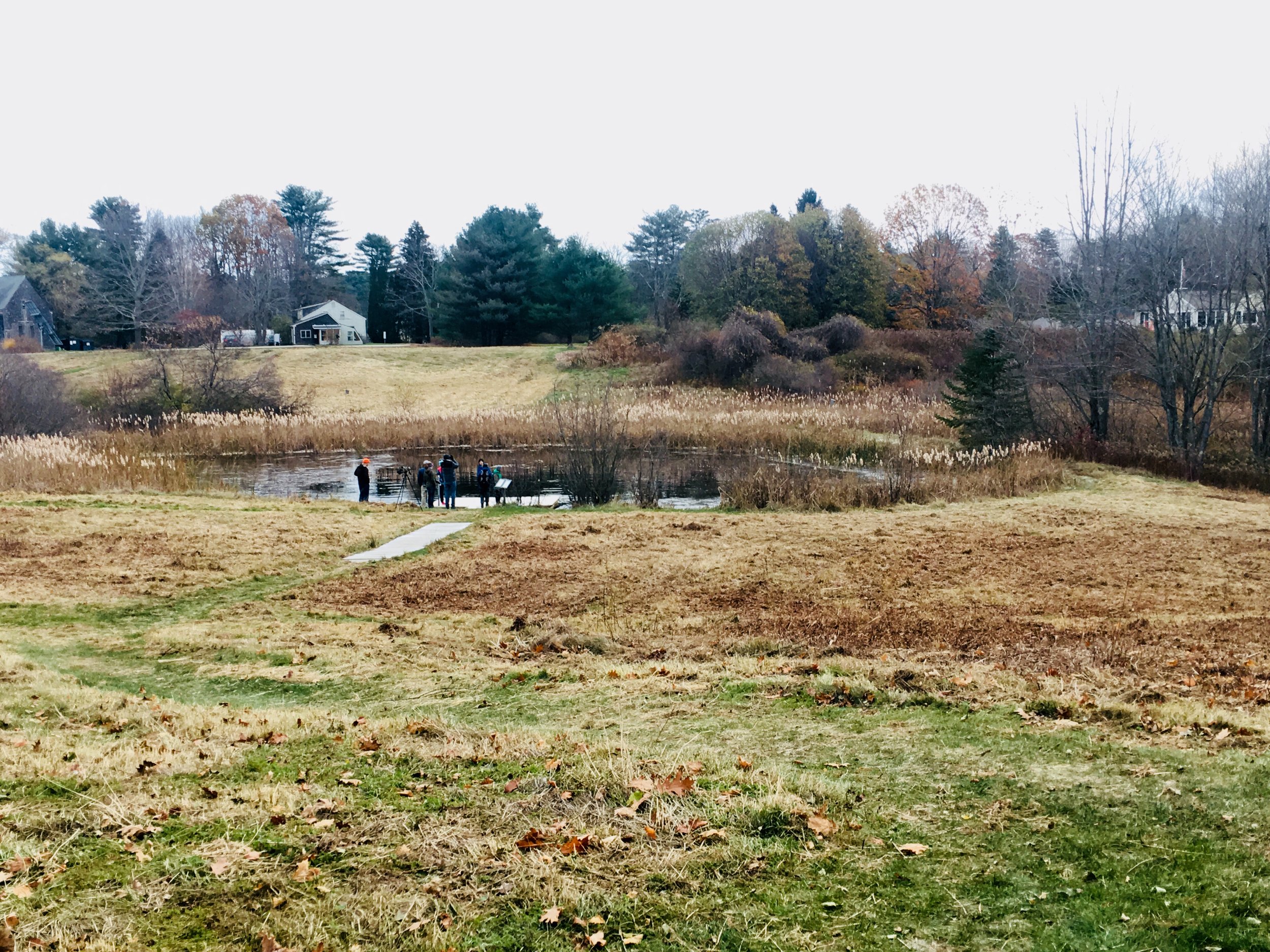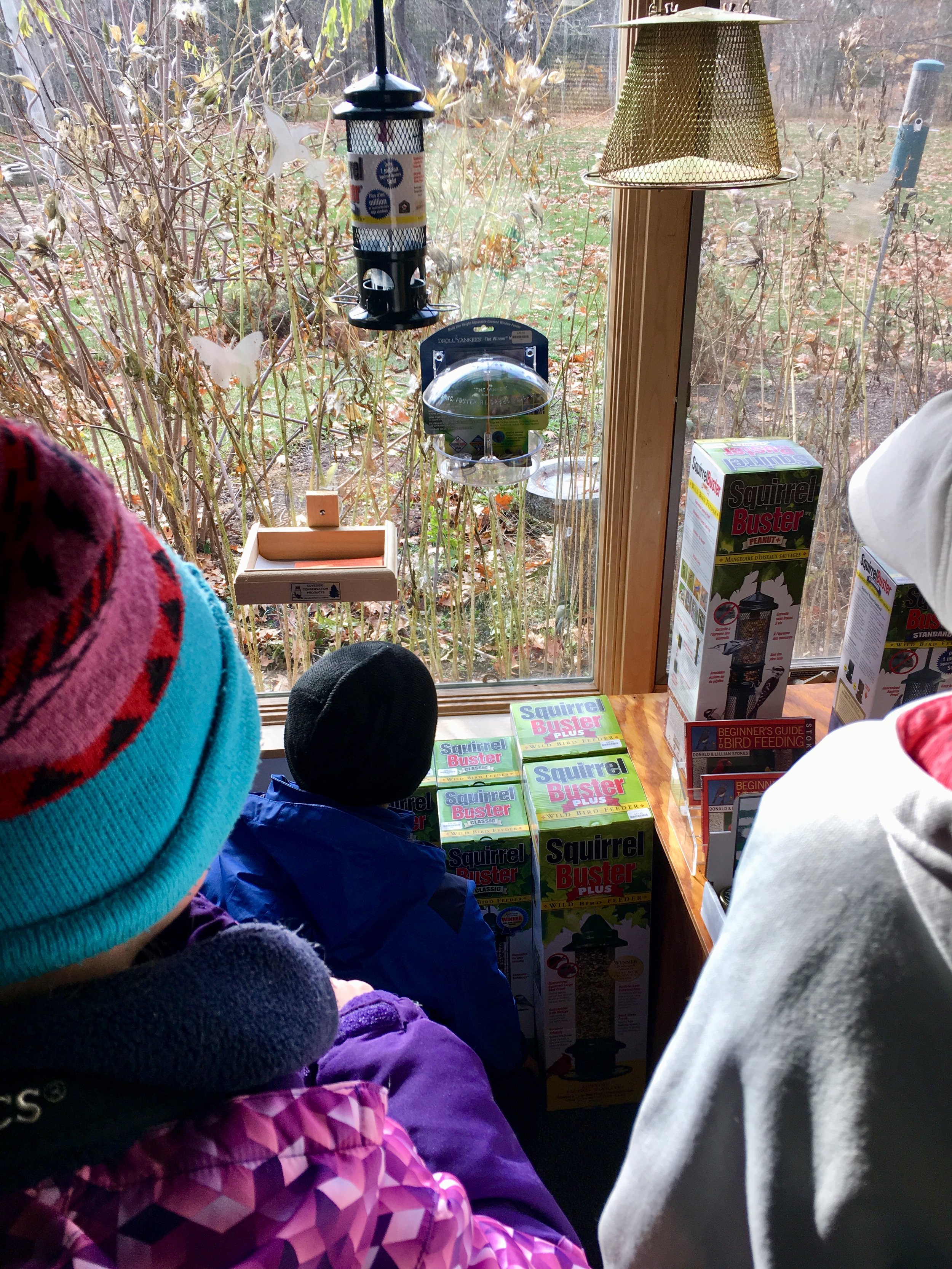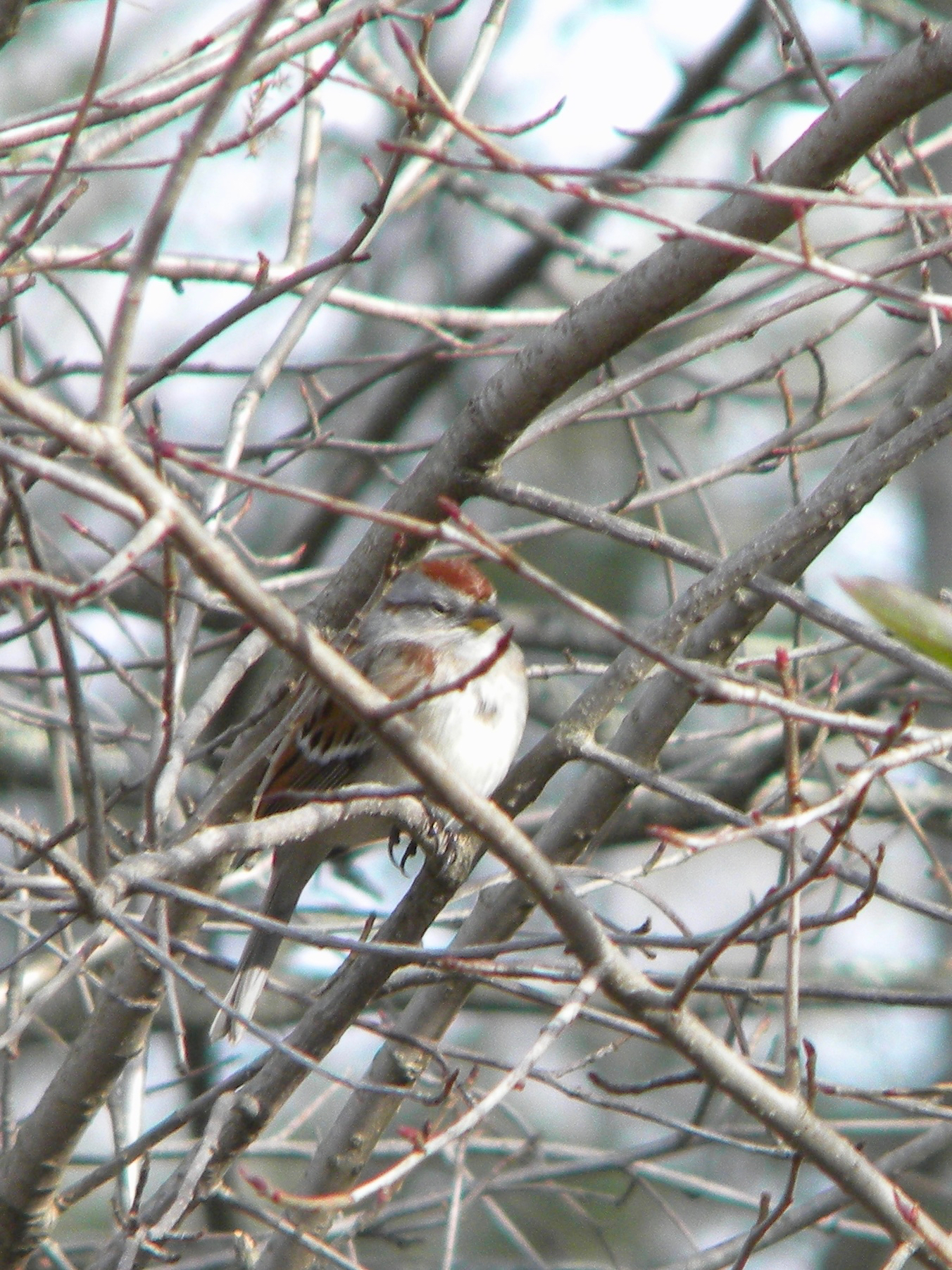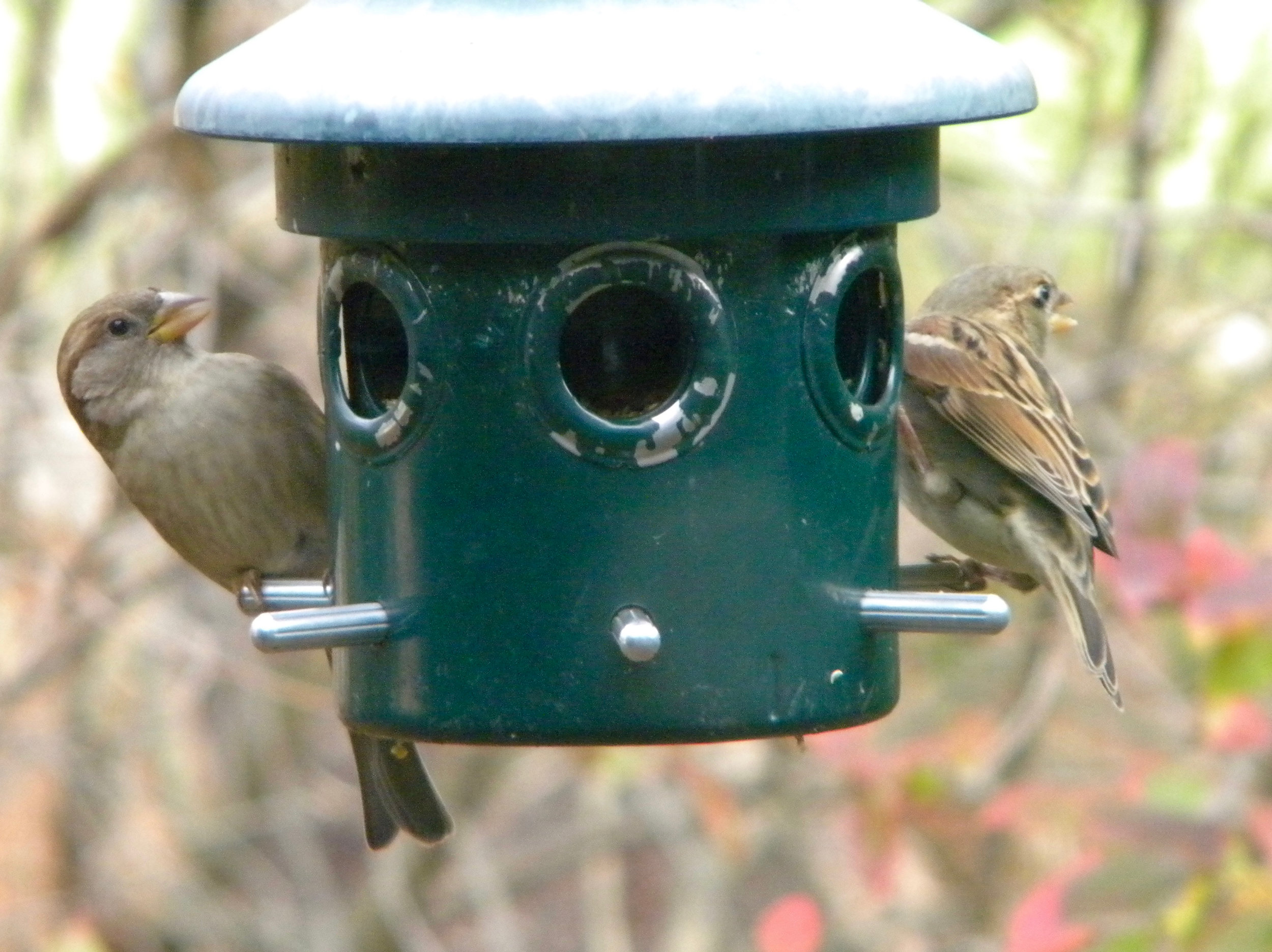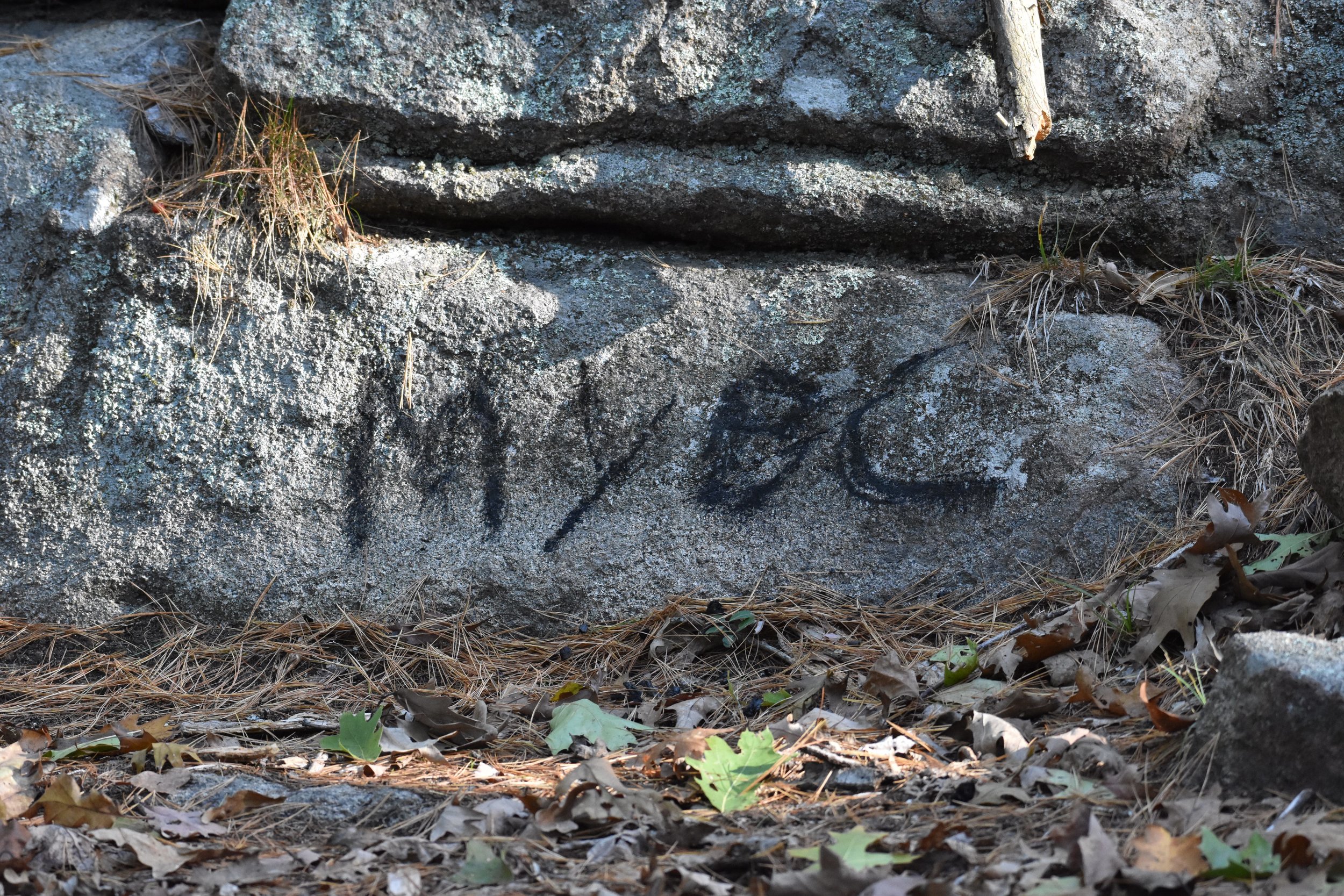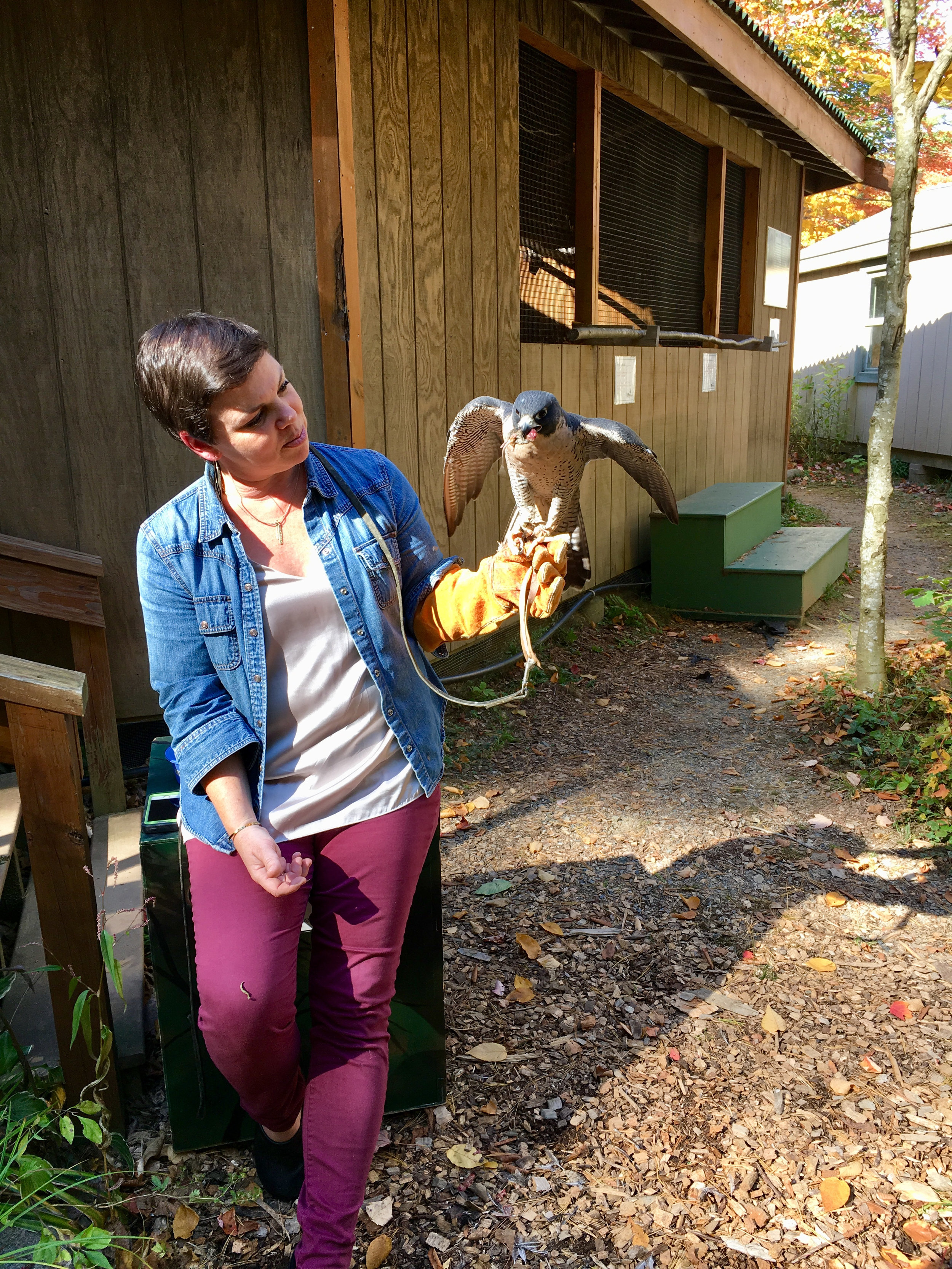By Lena Moser
Note: click on the hyperlinked names of the locations to access the eBird checklist for each spot.
Today we headed to Cape Elizabeth and visited all its famed birding spots in a whirlwind tour. In the chill of morning, we first gathered at Dyer Point, where we enjoyed seeing fly-by Great Cormorants, close Red-breasted Mergansers, a couple of distant, chunky Razorbills zooming speedily over the rolling ocean, a Red-necked Grebe, and several sizable rafts of colorful Harlequin Ducks. A male King Eider was recently spotted at this location, and although we poured all our keen attention into scanning the waters for his lovely countenance, we sadly came up empty-handed, as the King was nowhere to be found.
Next, we explored Two Lights State Park and were rewarded with good looks at the three species of scoter: White-winged, Surf, and Black. Although our walk through the brushy woods along the ocean was quiet and unproductive, we did see a couple of American Crows feeding on Staghorn Sumac berries, which was interesting to observe. Sumac berries are quite nutritious, containing vitamin C, protein, fiber, and generous amounts of the minerals potassium, calcium, magnesium, phosphorus. Perhaps this is why the crows were enjoying munching on them. Just as we piled into the cars to leave Two Lights, Brendan spotted a large bird soaring behind all the trees and asked, "Hey, what's that?" It was big and dark, but we weren't quite sure what it was because it was flying behind all the tree trunks, concealed from view. Suddenly, the bird rose up into the air, giving us great looks: a juvenile Bald Eagle! It was fun to get this good bird from inside the cars, only moments before we left. Great spotting, Brendan!
As we drove to Strawberry Fields, we listened to the apropos Strawberry Fields Forever by the Beatles. We were hoping to find some Cedar Waxwings or Snow Buntings here, but we had no such luck. Perhaps the windy morning kept these passerines down. We did, however, see a Northern Flicker, which was an unexpected treat.
Afterwards, at Kettle Cove, we were rewarded by excellent, close looks at four Brant bobbing up and down in the water right along the shore. Unfortunately, our brief walk through the woods was ridiculously quiet and unproductive... alas, simply not a good day for passerines. At Crescent Beach State Park we had another Red-necked Grebe and 10 Great Black-backed Gulls who flew overhead in a loose flock. We were enjoying watching their contrasting black-and-white plumage from below, until we were interrupted by a loud Bell Boeing V-22 Osprey military aircraft that flushed all birds from its path, and us too. Birders flushed by an Osprey... who would have thought!
Our penultimate destination was the Spurwink River crossing, where we hoped beyond hope to find a Short-eared Owl, but our timing wasn't right, since Short-eareds are crepuscular and prefer to be active during dawn and dusk. Perhaps we'll find this bird some other day. We scanned through over 80+ American Black Ducks at the marsh, and Seth's sharp eyes picked out a female Hooded Merganser and a beautiful male American Wigeon, which is considered a seasonal rarity! An alarmed American Crow also alerted us to a Red-tailed Hawk that few across the road and cooperatively perched up in an oak long enough for us to get nice looks through the scope.
We ended our birding adventure back at Dyer Point, where we crossed our fingers for another chance of finding the King Eider. Several other birders were at the Point already, with the same intention. While scanning a distant raft of Common Eiders, Lena picked out the King, and pretty soon several others were on him, too. There was a flurry of scope searches for this less-than-cooperative, distant bird, who frequently dove or disappeared behind the swelling of the waves. After some time working on the eider, though, everyone came away with satisfied looks at this special lifer. We were getting ready to leave the Point when Ian cried out, "Wait, what's this gull? I think it's a white-wing!" Sure enough, an Iceland Gull flew past us, and we were grateful to Ian for spotting this pretty, cream-colored gull for us. What an eventful day indeed!

